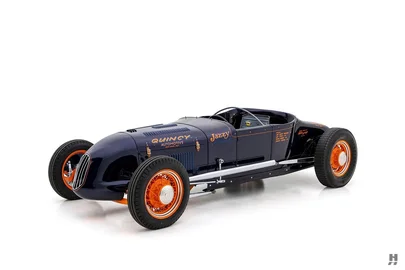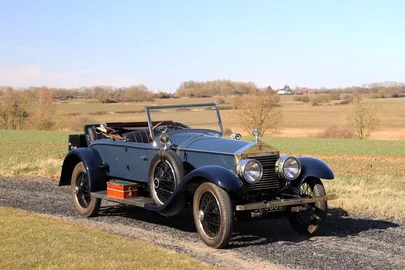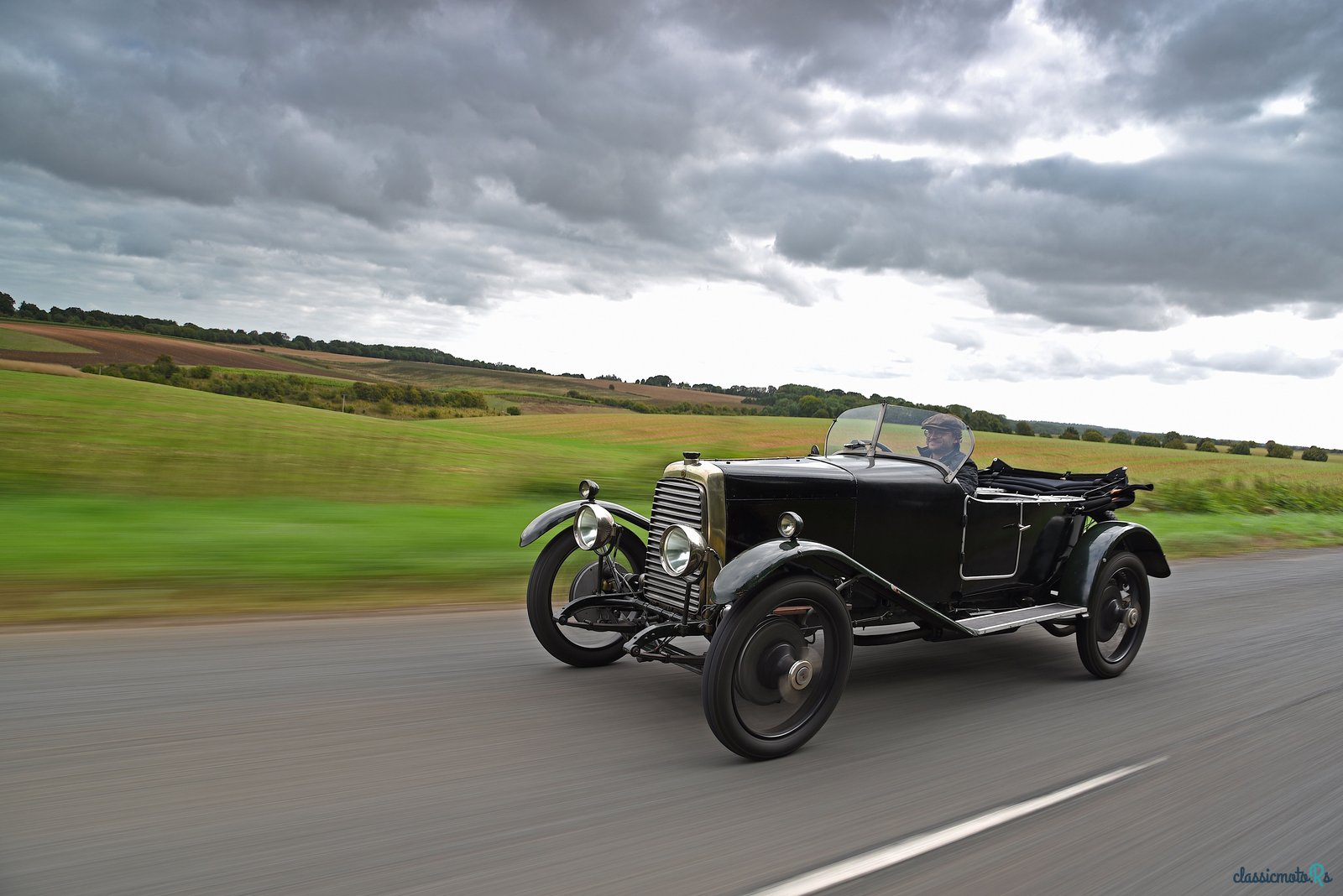
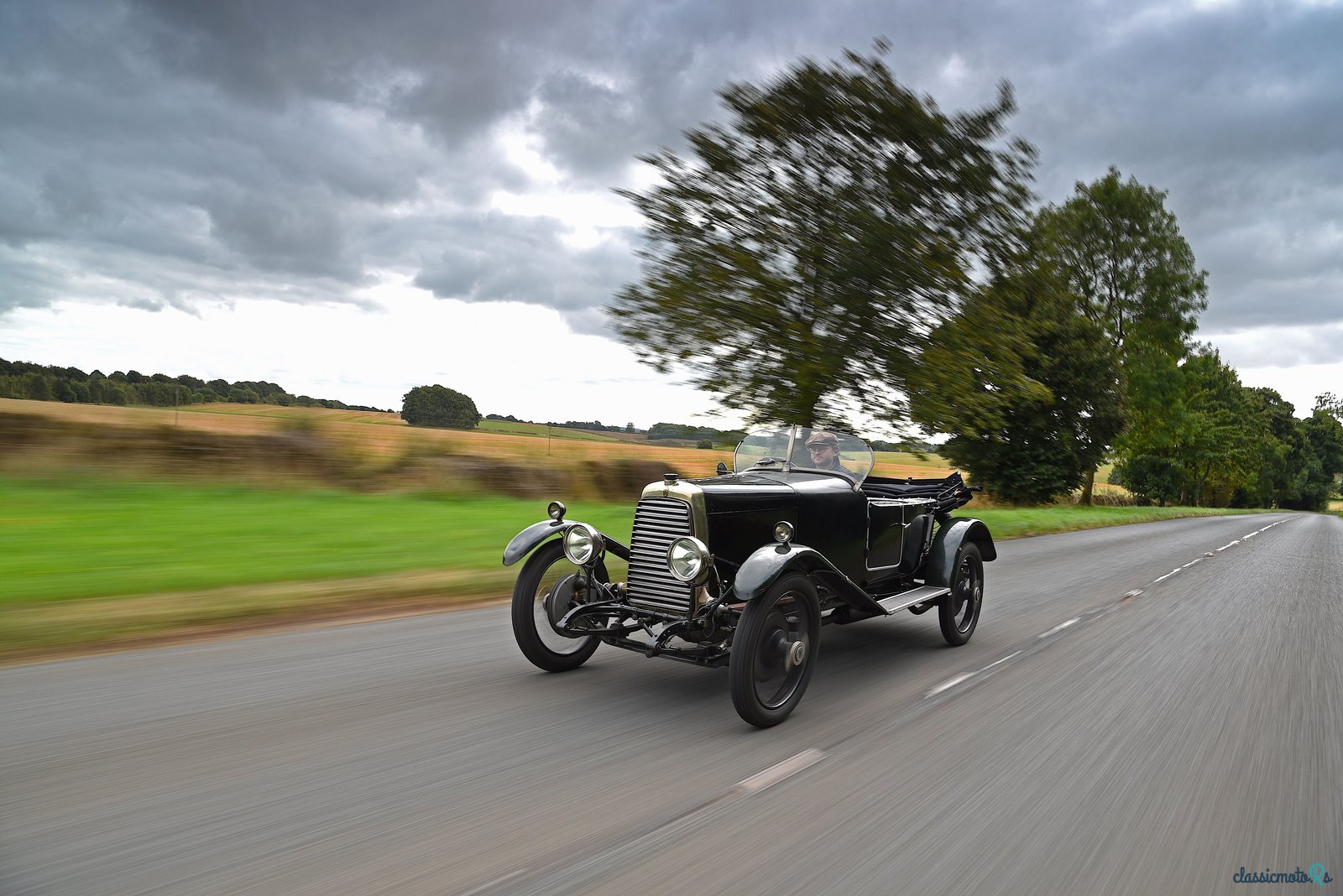

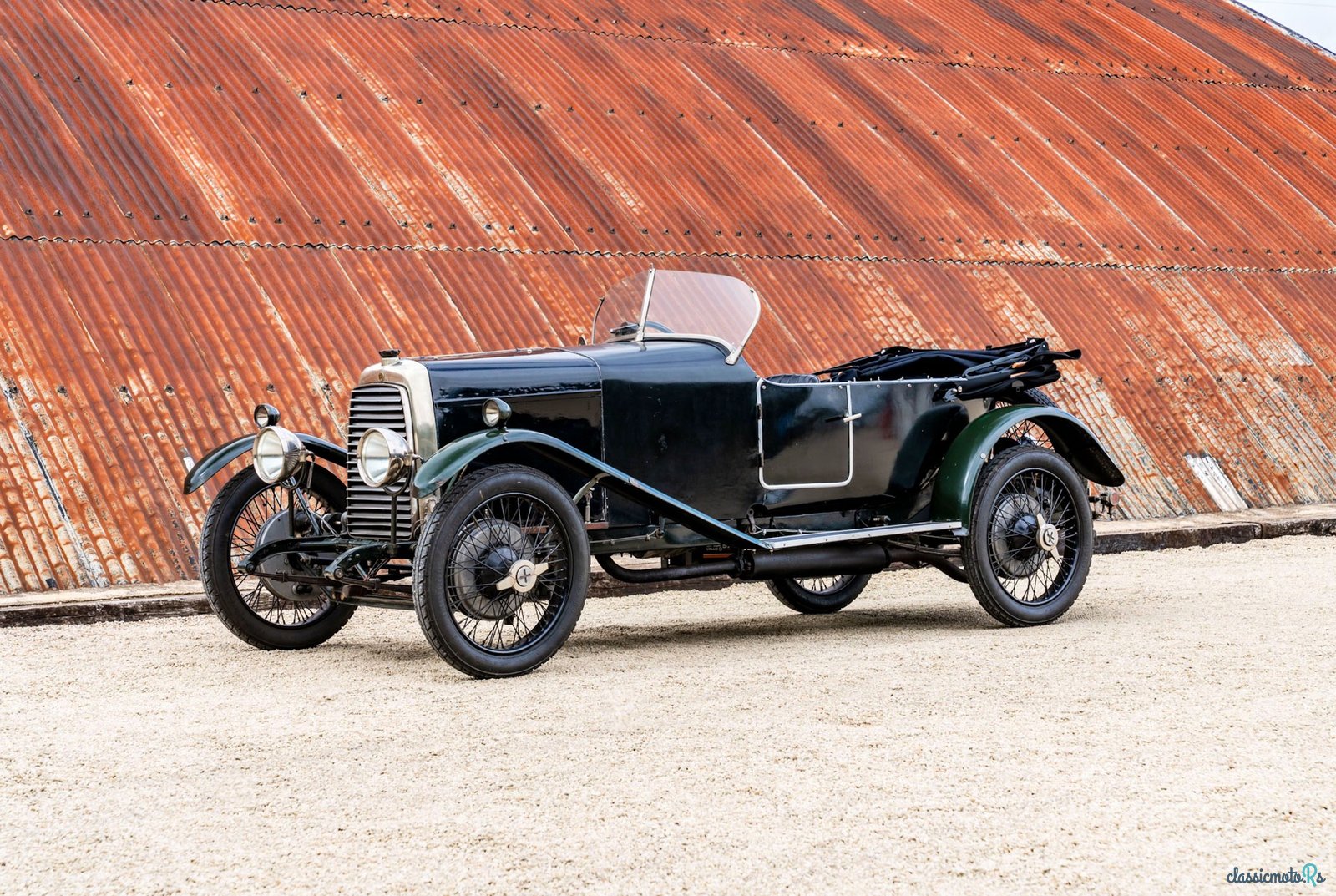

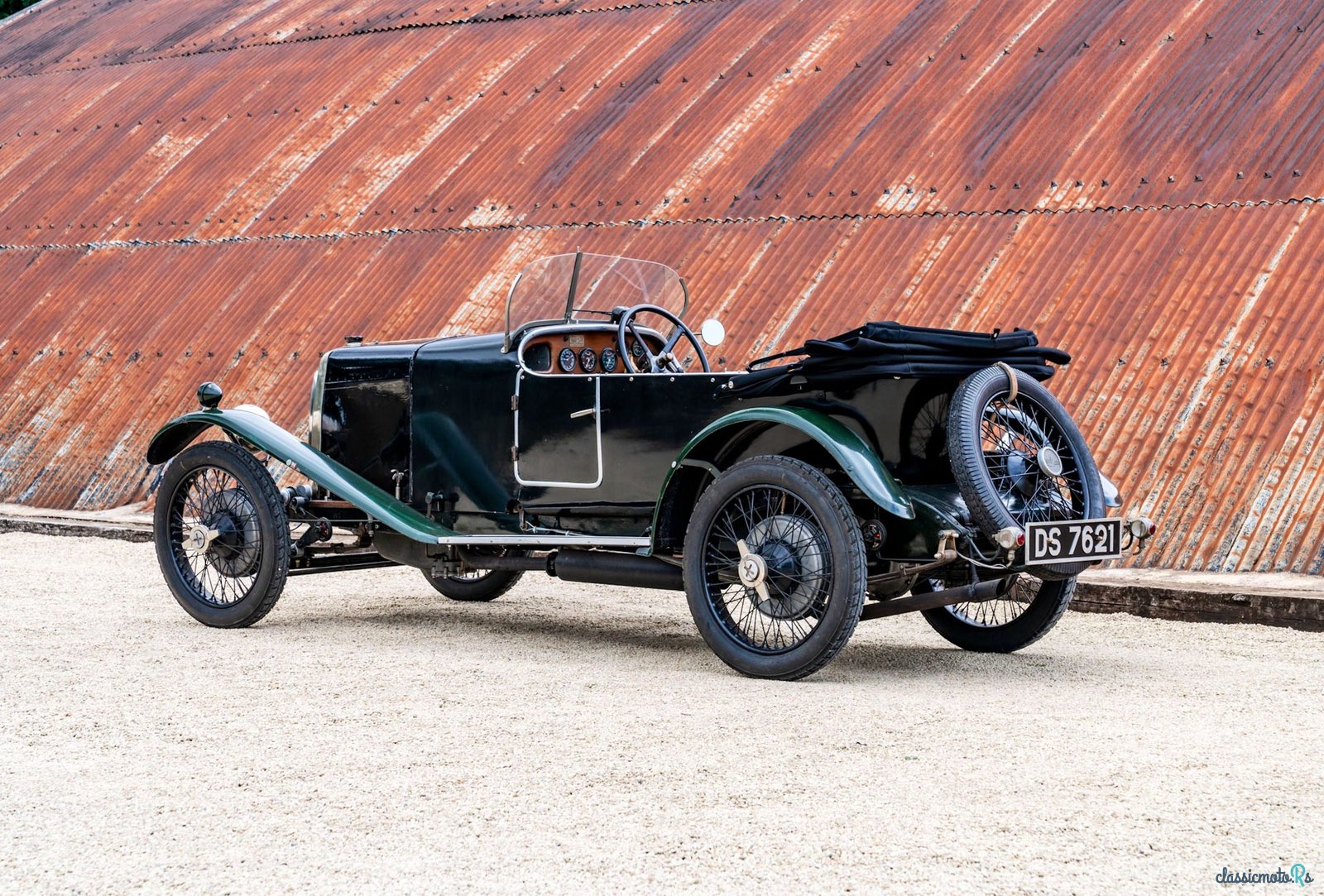
6 photos
1924' Aston Martin Long-Chassis Tourer
Report This Ad!Rate This!Bookmark This
£165,000Published 12 March 2023ID: QbRptj
Expired
2 years, 9 months ago
2 years, 9 months ago
Information from the owner
Age: 99 years
Seller's comments about 1924' Aston Martin Long-Chassis Tourer
- 1924 Aston Martin long-chassis tourer
- Chassis number 1941
- Rare survivor from the Bamford & Martin era
- One owner since 1961
- Displayed in the Brooklands Museum and recently restored
Although Lionel Martin and Robert Bamford had founded their company in 1913, they produced only a tiny handful of their Aston Martin cars over the next decade – and those were mostly for competition use. Not until 1923 did the firm really start anything that could be referred to as a ‘production run’ of road cars that could be sold to the public, which makes this 1924 Aston Martin sidevalve – chassis number 1941 – an exceptionally early example of the breed.
Built in 1924 on Bamford & Martin’s long chassis (a short-chassis model was also offered), it was supplied new to a Midlands-based buyer in April of that year. It’s thought to have stayed with that first owner until World War Two, by which time its body had been removed and it was requisitioned for use by the Home Guard.
In 1945 it was rescued from a scrapyard by John Vinnicombe and his brother. A letter from John states that, although they were ‘impoverished students’ at the time, they managed to rebuild the Aston Martin – even if it meant fitting components such as a Humber back axle. The car was given a new registration number – MPG 503 – and John then used it as daily transport in London before being forced to sell it because he had nowhere to keep it.
By 1961, the Aston Martin was back in a scrapyard – or, to be more specific, GA Brooks (Motor Components) Ltd, which was based in Edenbridge in Kent. On 26 May, it was bought from there by an owner who would end up keeping it until the present day – a period of more than 60 years.
He paid the princely sum of £75 for the Aston Martin – the receipt is still part of the history file – and rebuilt it to original specification. During the 1960s and 1970s, the car raced in Aston Martin Owners’ Club events, including the St John Horsfall meeting, and there’s a photograph of it being enthusiastically cornered during a 10-lap scratch race at Silverstone in July 1976.
From the early 1980s onwards, the Aston Martin was displayed at the Brooklands Museum in Surrey, and in 1988 it was re-registered DS 7621. It remained in the museum until 2012, when it was sent to Switzerland so that it could be restored. The sidevalve engine was rebuilt and there are thousands of photographs documenting the work that was carried out.
The rebuild took two years and in 2014 the car returned to Brooklands, where it was displayed alongside two well-known racers from marque history – the famous ‘Razorblade’ and the Halford Special. Fitted with an original-style Tourer body, this Aston Martin is now being offered for sale with a fascinating history file that includes hand-written notes, invoices and receipts going back to 1961 and beyond.
It’s thought to have had only four owners in almost 100 years and is among the earliest surviving Aston Martins, making this a rare opportunity to acquire a car from the legendary marque’s Bamford & Martin years.
MODEL HISTORY
Lionel Martin and Robert Bamford first went into business together in 1913, becoming partners in a garage that was based in Kensington and sold Calthorpe, GWK and Singer cars. In 1914, Martin competed in a Singer that had been tuned by their foreman Jack Addis, and he did so well at a venue called Aston Hill in Buckinghamshire that when Bamford & Martin Ltd started to make its own cars, they would be called Aston-Martins (the hyphen subsequently being dropped).
In the years immediately following World War One, Bamford & Martin made a name for itself in motor racing with a short run of Aston Martin competition cars that included ‘Bunny’ – which set numerous records at Brooklands – plus a pair of twin-overhead-camshaft Grand Prix racers that were commissioned by Count Louis Zborowski. It also built the car known as A3, which is now the oldest-surviving Aston Martin.
Not until 1923 did road-car production get under way, customers being able to choose between a 38bhp long-chassis model or a 45bhp short-chassis variant. They were fitted with a 1486cc sidevalve engine, but fewer than 60 were built before the company ran into financial difficulties and was placed into receivership in 1925.
Robert Bamford had left in 1921, and Lionel Martin did likewise four years later when he fell out with board member John Benson – later Lord Charnwood. After being put up for sale by the receiver, Aston Martin was bought by William Renwick and Augustus Bertelli, who moved the company from Kensington to Feltham and started the next chapter in its occasionally turbulent history.
- Chassis number 1941
- Rare survivor from the Bamford & Martin era
- One owner since 1961
- Displayed in the Brooklands Museum and recently restored
Although Lionel Martin and Robert Bamford had founded their company in 1913, they produced only a tiny handful of their Aston Martin cars over the next decade – and those were mostly for competition use. Not until 1923 did the firm really start anything that could be referred to as a ‘production run’ of road cars that could be sold to the public, which makes this 1924 Aston Martin sidevalve – chassis number 1941 – an exceptionally early example of the breed.
Built in 1924 on Bamford & Martin’s long chassis (a short-chassis model was also offered), it was supplied new to a Midlands-based buyer in April of that year. It’s thought to have stayed with that first owner until World War Two, by which time its body had been removed and it was requisitioned for use by the Home Guard.
In 1945 it was rescued from a scrapyard by John Vinnicombe and his brother. A letter from John states that, although they were ‘impoverished students’ at the time, they managed to rebuild the Aston Martin – even if it meant fitting components such as a Humber back axle. The car was given a new registration number – MPG 503 – and John then used it as daily transport in London before being forced to sell it because he had nowhere to keep it.
By 1961, the Aston Martin was back in a scrapyard – or, to be more specific, GA Brooks (Motor Components) Ltd, which was based in Edenbridge in Kent. On 26 May, it was bought from there by an owner who would end up keeping it until the present day – a period of more than 60 years.
He paid the princely sum of £75 for the Aston Martin – the receipt is still part of the history file – and rebuilt it to original specification. During the 1960s and 1970s, the car raced in Aston Martin Owners’ Club events, including the St John Horsfall meeting, and there’s a photograph of it being enthusiastically cornered during a 10-lap scratch race at Silverstone in July 1976.
From the early 1980s onwards, the Aston Martin was displayed at the Brooklands Museum in Surrey, and in 1988 it was re-registered DS 7621. It remained in the museum until 2012, when it was sent to Switzerland so that it could be restored. The sidevalve engine was rebuilt and there are thousands of photographs documenting the work that was carried out.
The rebuild took two years and in 2014 the car returned to Brooklands, where it was displayed alongside two well-known racers from marque history – the famous ‘Razorblade’ and the Halford Special. Fitted with an original-style Tourer body, this Aston Martin is now being offered for sale with a fascinating history file that includes hand-written notes, invoices and receipts going back to 1961 and beyond.
It’s thought to have had only four owners in almost 100 years and is among the earliest surviving Aston Martins, making this a rare opportunity to acquire a car from the legendary marque’s Bamford & Martin years.
MODEL HISTORY
Lionel Martin and Robert Bamford first went into business together in 1913, becoming partners in a garage that was based in Kensington and sold Calthorpe, GWK and Singer cars. In 1914, Martin competed in a Singer that had been tuned by their foreman Jack Addis, and he did so well at a venue called Aston Hill in Buckinghamshire that when Bamford & Martin Ltd started to make its own cars, they would be called Aston-Martins (the hyphen subsequently being dropped).
In the years immediately following World War One, Bamford & Martin made a name for itself in motor racing with a short run of Aston Martin competition cars that included ‘Bunny’ – which set numerous records at Brooklands – plus a pair of twin-overhead-camshaft Grand Prix racers that were commissioned by Count Louis Zborowski. It also built the car known as A3, which is now the oldest-surviving Aston Martin.
Not until 1923 did road-car production get under way, customers being able to choose between a 38bhp long-chassis model or a 45bhp short-chassis variant. They were fitted with a 1486cc sidevalve engine, but fewer than 60 were built before the company ran into financial difficulties and was placed into receivership in 1925.
Robert Bamford had left in 1921, and Lionel Martin did likewise four years later when he fell out with board member John Benson – later Lord Charnwood. After being put up for sale by the receiver, Aston Martin was bought by William Renwick and Augustus Bertelli, who moved the company from Kensington to Feltham and started the next chapter in its occasionally turbulent history.
